Krounchasana, known as the Heron Pose in English is an intermediate seated yoga posture that stretches the hamstrings, calves, and back while enhancing balance and focus. In this asana, one leg is folded with the heel near the sitting bone, while the other leg is extended upwards towards the sky, requiring deep hamstring flexibility. The spine remains upright, engaging the core and promoting strength in the lower back and legs. Besides improving posture, Krounchasana aids digestion, tones the abdominal organs, and encourages mental calmness through deep, mindful breathing. It's especially beneficial for athletes or those with tight leg muscles.
Position type: Forward Bend
Posture type: Seated
Ideal for: Flexibility and mobility
Targets: Back, Hamstrings, Calves
Pose level: Advanced
How to prepare for Krounchasana?
Before attempting Krounchasana, it’s essential to work on hamstring flexibility and opening up the hip and knee joints. This may take weeks or months for some people. When trying to do the pose, proper warm-ups and preparatory poses will allow you to move into the posture with the correct alignment and ease, avoiding injuries.
- Hamstring flexibility:
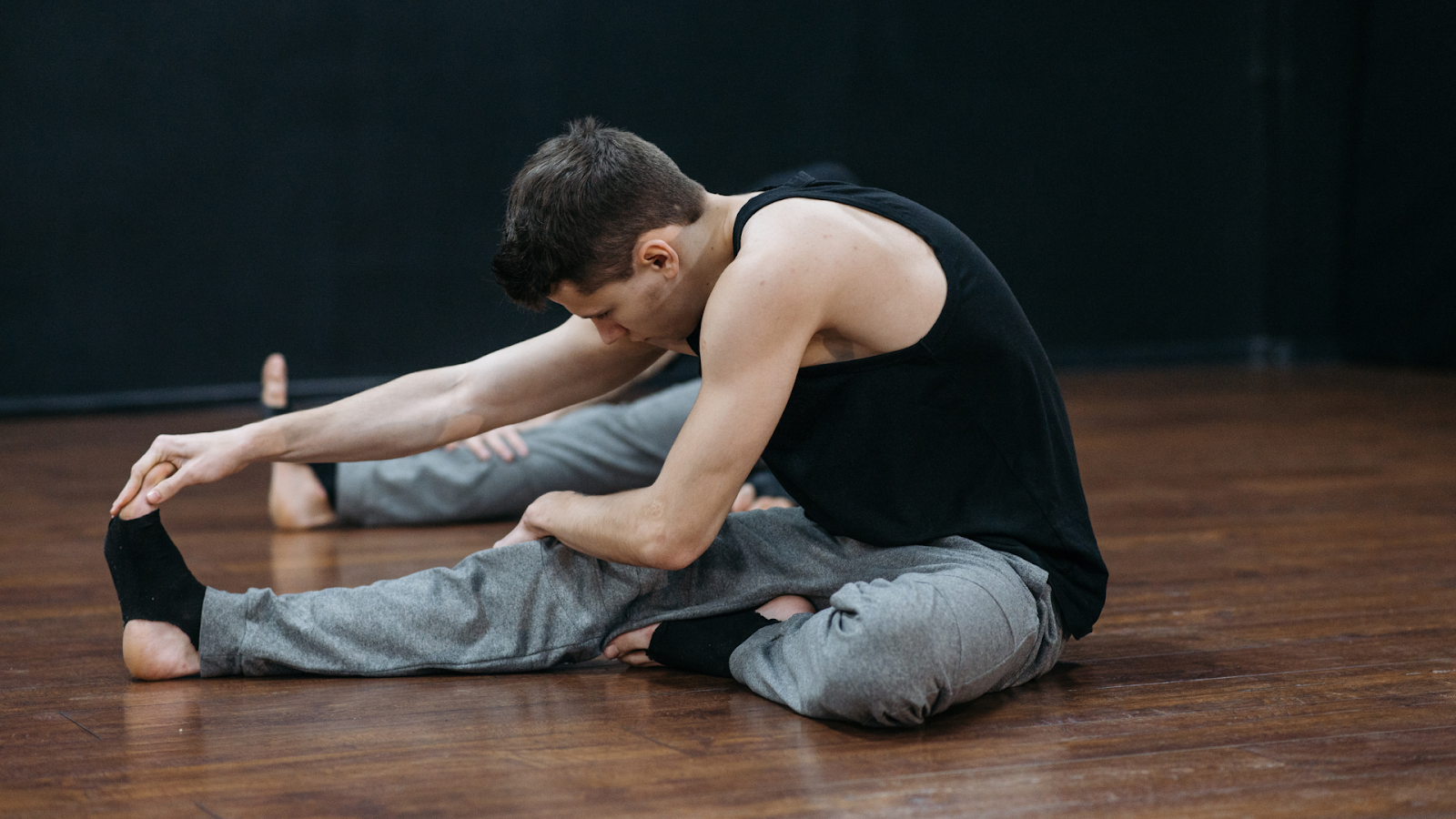
- Practice poses like Seated Forward Bend, Reclined Hand-to-Big-Toe Pose, and Standing Forward Bend to lengthen and stretch the hamstrings. Poses such as Downward-Facing Dog, Pyramid Pose, and High and Low Lunge are also excellent for preparing the legs.
- Hip and knee mobility:
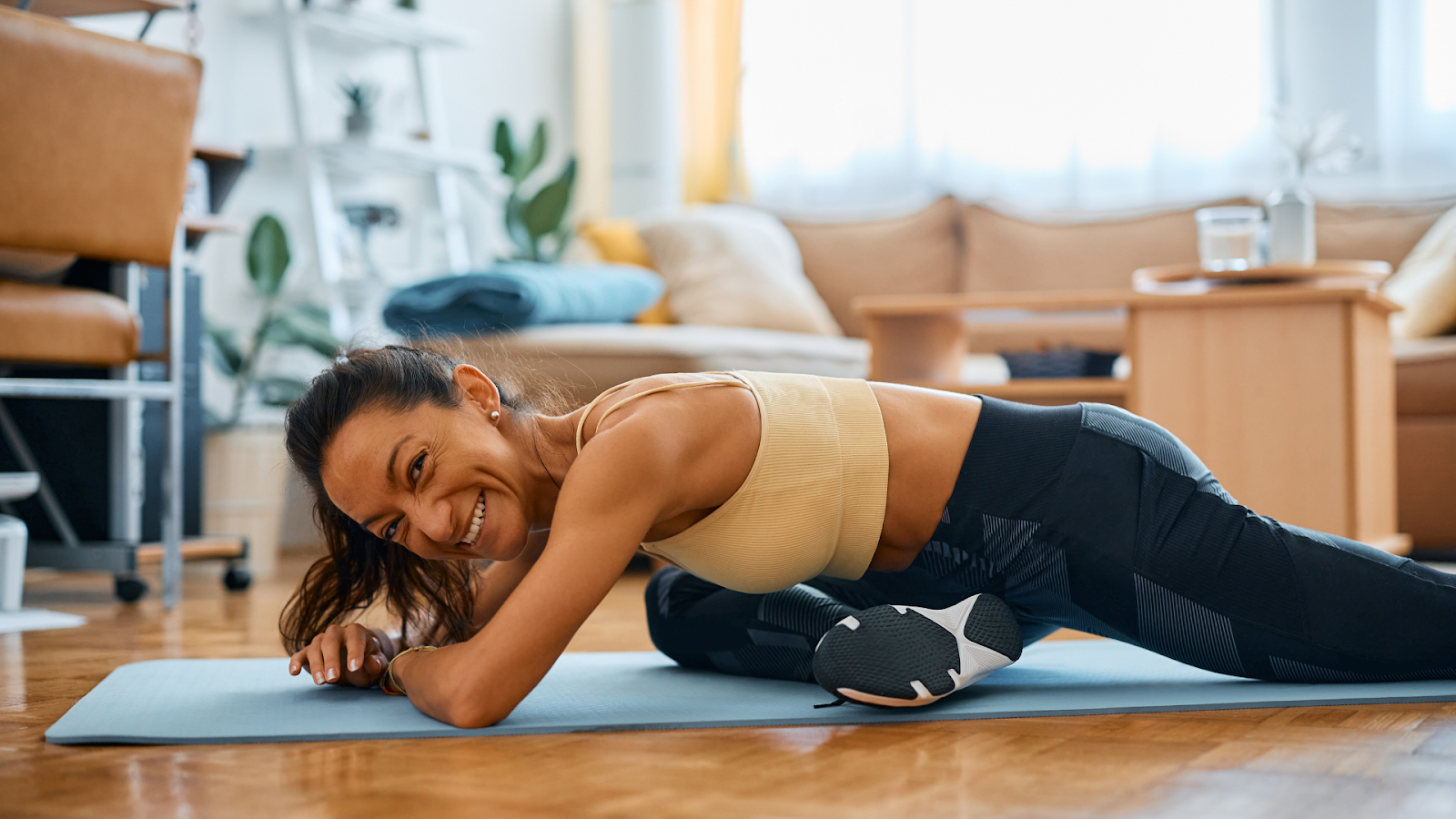
- Engage in hip-opening poses like Garland Pose, Pigeon Pose, and Cow Face Pose. Low Lunge and Butterfly Pose will help release tension in the hips and prepare the knees for deep flexion.
- Back and core strength:
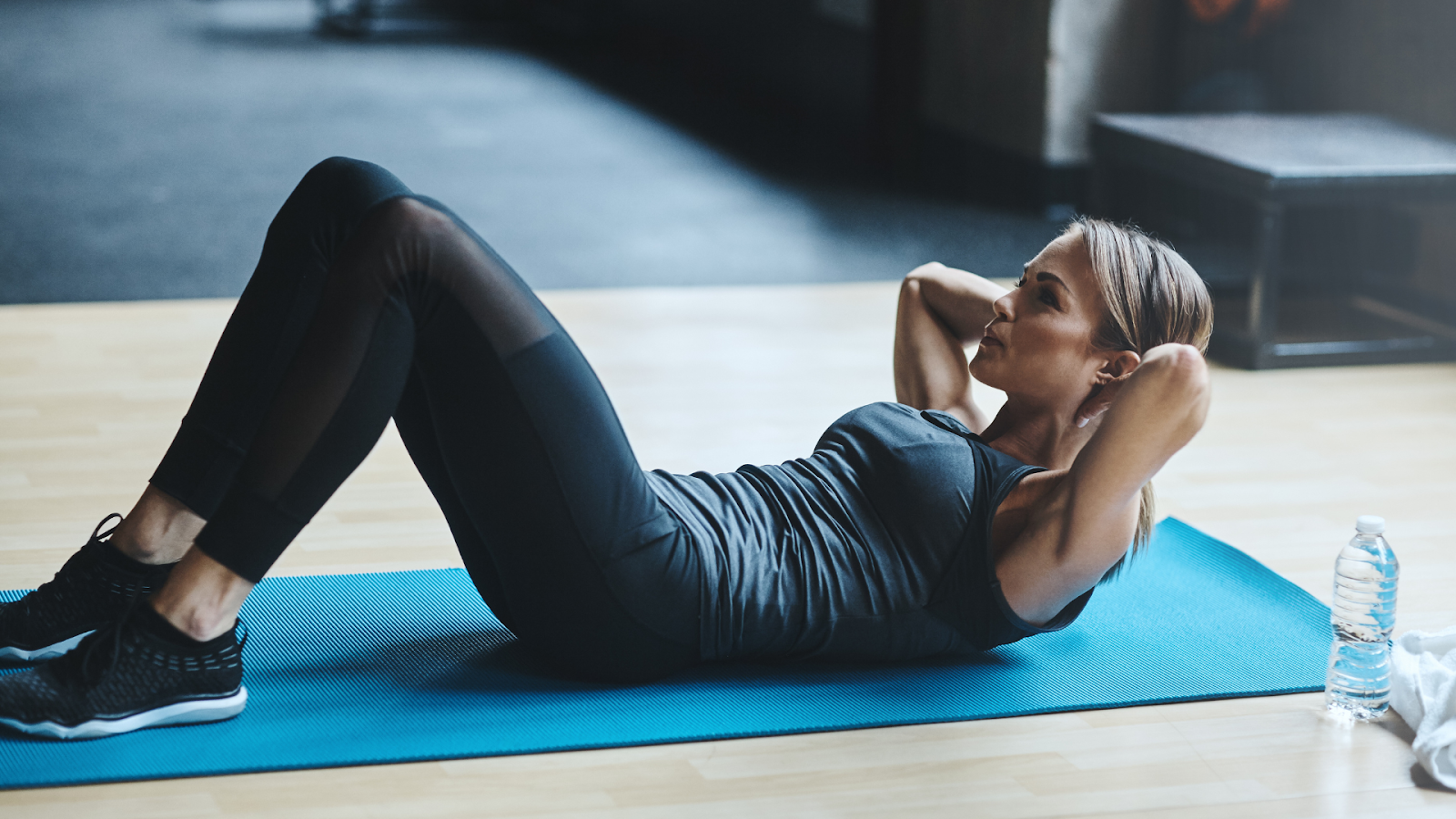
- Core engagement is important for stability in Krounchasana. Strengthen your back and core with poses like Boat Pose, Plank Pose, and Cobra Pose. These will help maintain an upright spine and support balance in the final pose.
How to do Krounchasana? Getting into the posture:
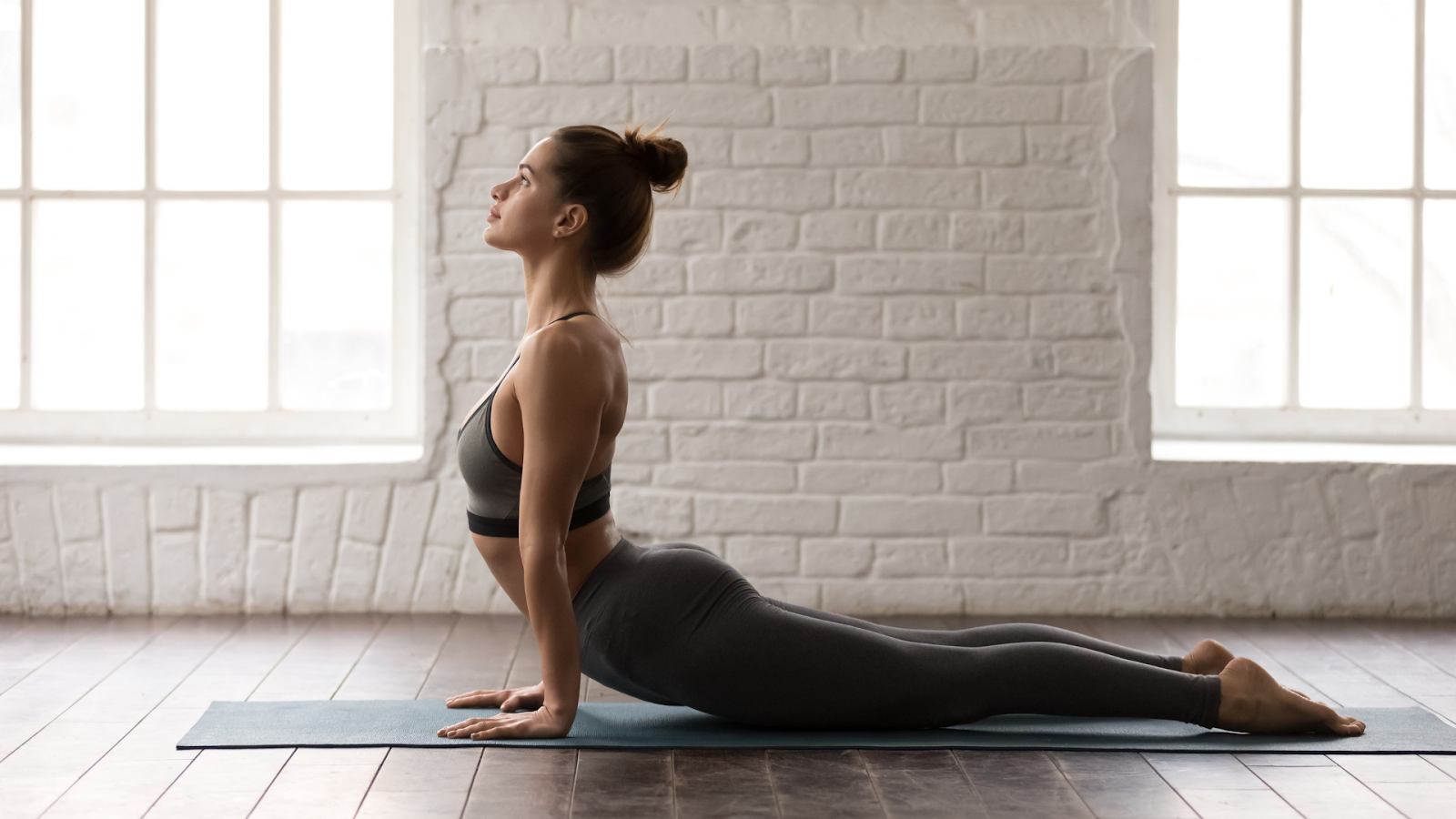
- Sit with your legs extended straight in front of you (in Dandasana), keeping your spine tall and engaged.
- Draw your right leg back, bringing the heel close to your right hip. The knee should point forward with the foot resting beside the outer hip.
- Keep the left leg extended straight. Inhale and hold onto the left foot or ankle with both hands. In the beginning holding the ankle might be easier than the foot.
- Exhale and slowly extend the left leg upward towards the sky, keeping your spine tall. Straighten the leg as much as your flexibility allows, aiming to create a 90-degree angle or more.
- Lift the chest while drawing the shoulder blades down the back to maintain an upright posture. Keep your gaze forward or upward, depending on balance and flexibility.
- Breathe deeply and hold the position for 5-10 breaths, feeling a deep stretch along the hamstrings, calves, and lower back.
Getting out of the posture:
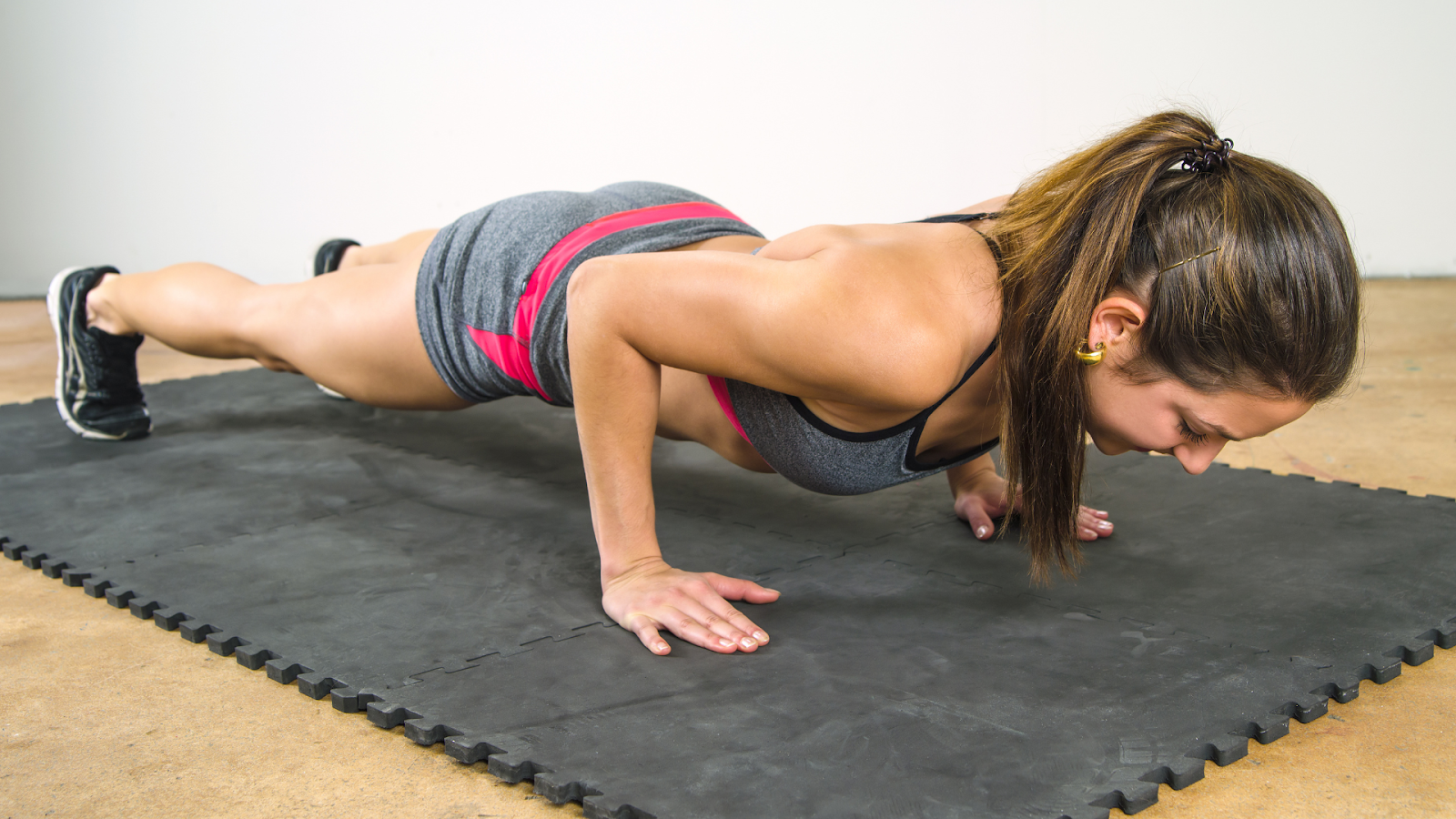
- To exit the pose, exhale and gently lower the leg. Switch sides and repeat with the opposite leg.
- Once complete, sit in Dandasana for a few minutes.
Key Alignments in Krounchasana:
- Ensure your spine remains straight and lengthened, avoiding any rounding or collapsing in the lower back. Engage your core to maintain this lift and stability through the torso.
- The raised leg should be fully engaged, with the quadriceps active and toes flexed. Keep the knee as straight as possible while extending the leg toward the sky, working to align it with your hip joint.
- Keep the shoulders drawn down and backwards to open the chest and avoid hunching. Both shoulders should remain aligned and relaxed, preventing any tension in the neck or upper back.
What are the benefits of Krounchasana? Krounchasana provides an intense stretch for the hamstrings, calves, and lower back, improving flexibility and mobility in the legs. This pose also strengthens the hip flexors and enhances balance and coordination, promoting better overall posture. By engaging the core muscles, it helps develop stability and strengthens the abdominal region. Additionally, Krounchasana stimulates the digestive organs, improving digestion and relieving bloating or discomfort. Mentally, the pose encourages focus and concentration, while the deep breathing involved helps to calm the mind, promoting relaxation. What are the contraindications of Krounchasana? Individuals with hamstring or calf injuries should avoid this pose as it involves an intense stretch in those areas. Knee injuries or discomfort, especially in the bent leg, may be aggravated by the deep flexion required, so it's best to avoid or modify the posture. Those with lower back issues, like herniated discs or sciatica, should be cautious, as the forward bend may put extra strain on the spine. Shoulder or neck injuries can also be a concern since the pose requires flexibility and strength in the upper body to maintain alignment. As this is an advanced posture, it is best to always learn to practice with a teacher. What are the counterposes of Krounchasana?
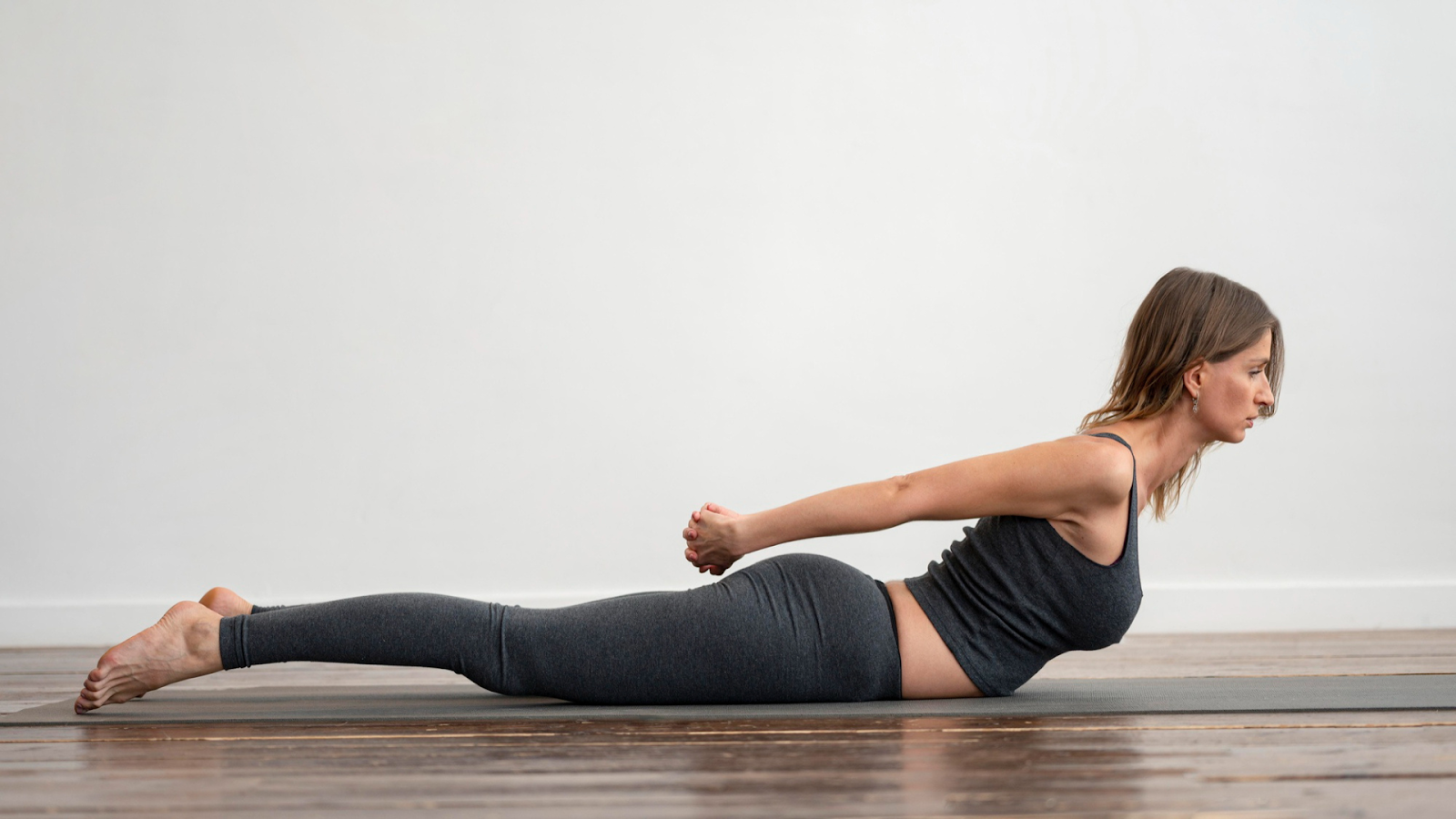
Practice Krounchasana with both legs and then sit in Dandasana for a few minutes relaxing the leg muscles and bringing back balance. Variations of Krounchasana: Easy variation:
- Use a strap around the foot of the extended leg. This helps maintain alignment while providing support, especially if flexibility is limited. Hold the strap with both hands, allowing the leg to be lifted comfortably without strain.
- Sit on a folded blanket or bolster to elevate the hips, making it easier to maintain an upright spine. This variation can relieve tension in the lower back and enhance comfort in the pose.
Advanced variation:
- After extending the leg upward, add a gentle twist by rotating the torso towards the bent knee, reaching the opposite arm towards the foot of the extended leg. This variation increases the challenge and deepens the stretch in the back and hips.
- From the extended position, reach the arm of the bent leg around the back to grasp the foot or ankle of the extended leg, creating a bind. This variation requires greater flexibility and strength, enhancing the stretch and engagement in the entire body.
Advice for Beginners: For beginners trying Krounchasana, the focus should be on alignment and comfort rather than forcing the pose. Start with gentle hamstring and hip-opening stretches to prepare your body, and take advantage of props like a strap or blanket for support. Pay attention to your breath, using it to help you find stability and ease in the pose. If you feel any strain, release and modify as needed; it's okay to keep the raised leg lower if you're not yet flexible. Remember that consistency in practice will gradually improve your strength and flexibility over time.Shvasa tips:
- Activate your core to support your spine and maintain an upright posture. This will also improve balance and avoid straining your lower back.
- Use deep, mindful breaths to help relax the body and deepen the stretch. Inhale as you lengthen the spine and exhale as you extend the raised leg, allowing your body to ease into the pose gradually.
- Always pay attention to any discomfort or tension, and avoid pushing yourself too far. Practice with an experienced teacher to ensure you are learning all the right techniques.
Learn how to practice Krounchasana live with experienced teachers on Shvasa. Meta Description: How to do Krounchasana with step-by-step instructions, benefits, contraindications and modifications. Summary: Krounchasana, known as the Heron Pose in English is an intermediate seated yoga posture that stretches the hamstrings, calves, and back while enhancing balance and focus. FAQs:
- What is Krounchasana?
Krounchasana, known as the Heron Pose in English is an intermediate seated yoga posture that stretches the hamstrings, calves, and back while enhancing balance and focus. In this asana, one leg is folded with the heel near the sitting bone, while the other leg is extended upwards towards the sky, requiring deep hamstring flexibility. The spine remains upright, engaging the core and promoting strength in the lower back and legs.
- How to do Krounchasana?
- Sit with your legs extended straight in front of you (in Dandasana), keeping your spine tall and engaged.
- Draw your right leg back, bringing the heel close to your right hip. The knee should point forward with the foot resting beside the outer hip.
- Keep the left leg extended straight. Inhale and hold onto the left foot or ankle with both hands. In the beginning holding the ankle might be easier than the foot.
- Exhale and slowly extend the left leg upward towards the sky, keeping your spine tall. Straighten the leg as much as your flexibility allows, aiming to create a 90-degree angle or more.
- Lift the chest while drawing the shoulder blades down the back to maintain an upright posture. Keep your gaze forward or upward, depending on balance and flexibility.
- Breathe deeply and hold the position for 5-10 breaths, feeling a deep stretch along the hamstrings, calves, and lower back.
- To exit the pose, exhale and gently lower the leg. Switch sides and repeat with the opposite leg.
- Once complete, sit in Dandasana for a few minutes.
- What are the benefits of Krounchasana?
Krounchasana provides an intense stretch for the hamstrings, calves, and lower back, improving flexibility and mobility in the legs. This pose also strengthens the hip flexors and enhances balance and coordination, promoting better overall posture. By engaging the core muscles, it helps develop stability and strengthens the abdominal region.
- What are the contraindications of Krounchasana?
Individuals with hamstring or calf injuries should avoid this pose as it involves an intense stretch in those areas. Knee injuries or discomfort, especially in the bent leg, may be aggravated by the deep flexion required, so it's best to avoid or modify the posture. Those with lower back issues, like herniated discs or sciatica, should be cautious, as the forward bend may put extra strain on the spine.















.jpg)
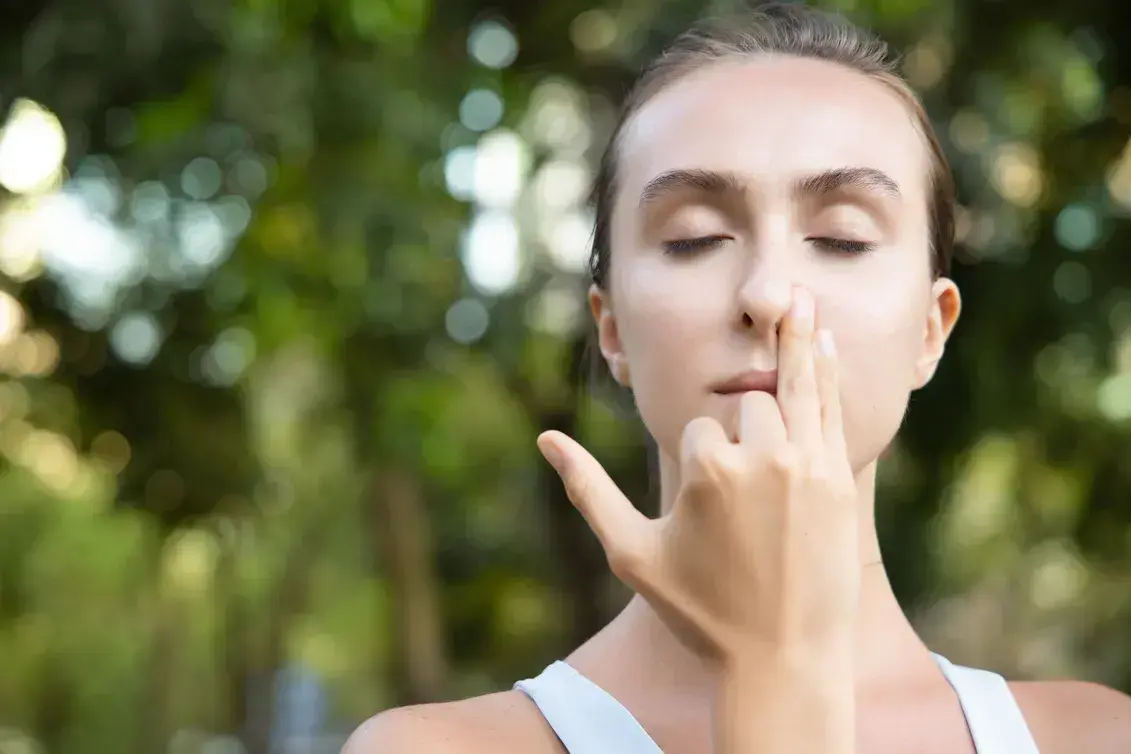
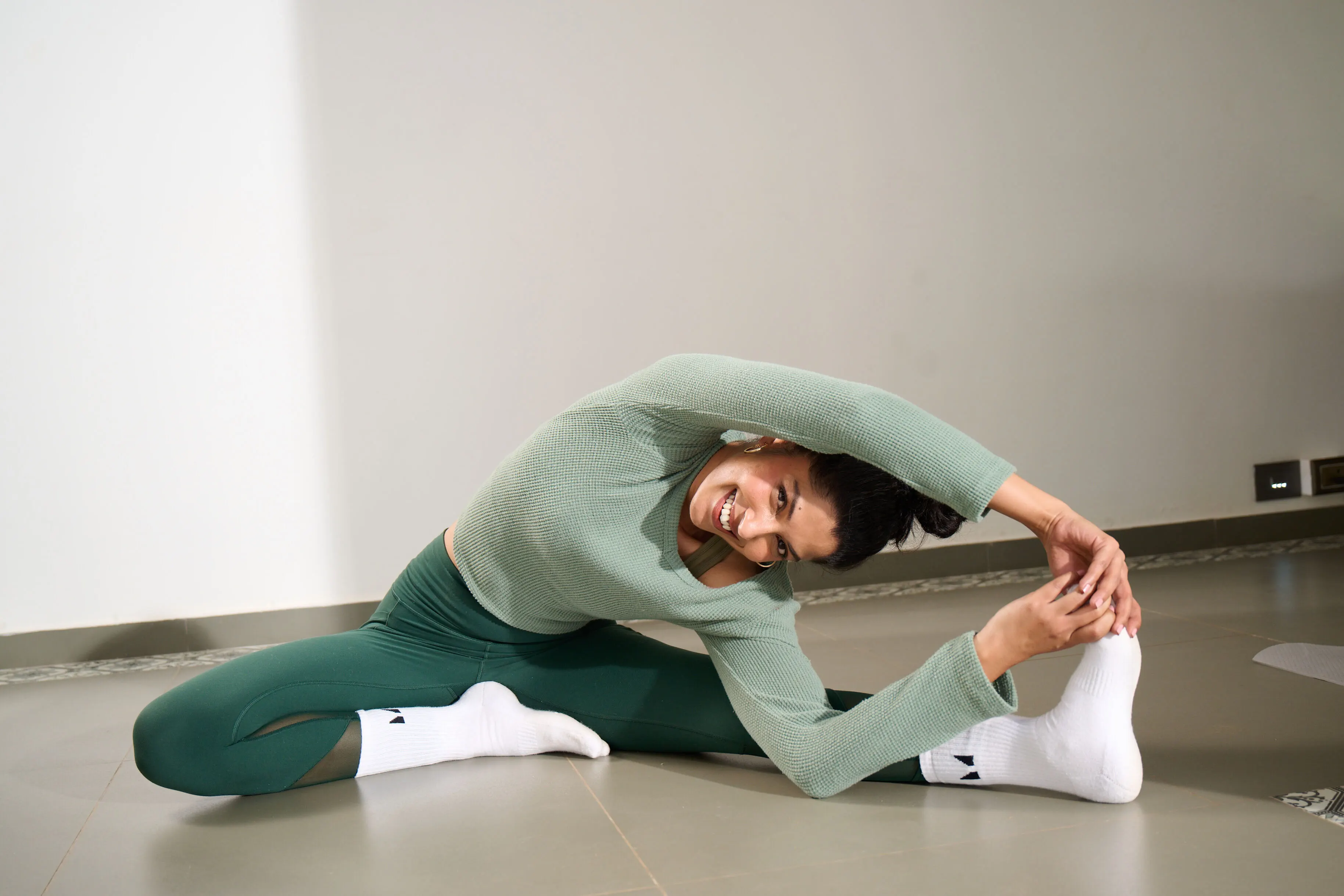










%201.png)

%201.svg)






%201.svg)